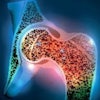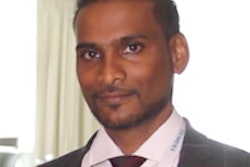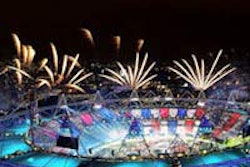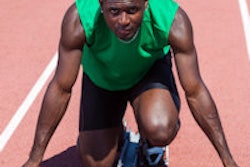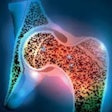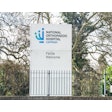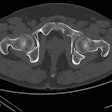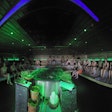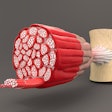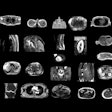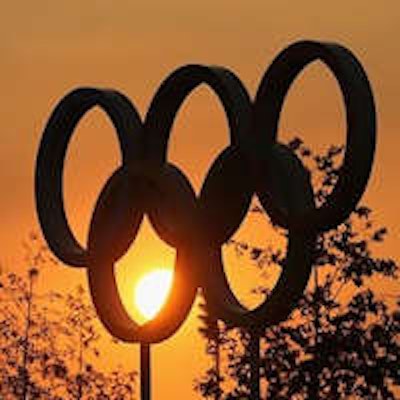
Training, training, training: That's what lay behind the success of trauma care at the 2012 Olympics, said Dr. David Zideman, clinical lead for emergency medical services for the 2012 London Olympic and Paralympic Games, to a packed audience at last week's International Forum on Quality and Safety in Healthcare 2013.
"Preparation is all important. We received lots of comments asking us why we began preparing so early, but it was essential and paid off," he said, noting that volunteers received around 24 hours of training in preparation for their stint at the games.
 "It wasn't quite 'Team Ferrari' but we had to get people off the field of play in 1.5 minutes," said Dr. David Zideman, clinical lead for emergency medical services for the 2012 Olympics.
"It wasn't quite 'Team Ferrari' but we had to get people off the field of play in 1.5 minutes," said Dr. David Zideman, clinical lead for emergency medical services for the 2012 Olympics.
Together with his colleague, Dr. Pamela Venning (head of medical services for the London Organizing Committee of the Olympic and Paralympic Games), Zideman provided 30 training sessions, each of which lasted six hours. This general training was followed by additional sessions specific to the venue and event. In addition, many volunteers completed test events, trialing potential scenarios.
Zideman, who is a queen's honorary physician, explained that underlying the showmanship of spectacular fireworks, state-of-the-art venues, and even royalty leaping out of a helicopter, the games had in place a robust emergency medical service. This provided a layer of care designed to serve athletes and spectators across all venues, as well as complete coverage if a major incident occurred. Last week's Boston marathon bombings serve as testament to how high-profile sports events can be prime targets.
The true scale of the emergency operation is brought into sharp focus when some of the numbers are considered. There were 1,389 emergency team medical volunteers at the London Olympics, including 567 at the Paralympics. For the 43 Olympic venues, around 8.8 million tickets were sold, and 10,500 athletes and 70,000 volunteers participated in the event.
The emergency team accounted for 52% of the medical workforce for the Olympics and just below 50% for the Paralympics, according to Zideman. "We had doctors trained in trauma and sports medicine, nurses, paramedics, and physiotherapists all working in a team, trained to work together," he said.
The overall service was divided into two distinct operations: field of play and spectators. "There wasn't any crossover between the two; there couldn't be because of the way security accreditation worked on the games side," he added.
Emergency medical service encounters at London Olympics, 27 July to 12 August 2012
- More than 38,000 medical encounters in total
- 1,200-1,800 events per day overall
- 80-100 casualties per day across all venues for field-of-play
- 500-600 casualties overall field-of-play
- 1,000 spectator events per day across all venues
- 7,000 events seen by first responders mostly, then crowd doctors and nurses
- 1,946 neurological diagnoses, of which 85% were headaches
- 2,384 injury/musculoskeletal, of which 57% were lacerations
- 3,635 dermatological, of which 36% were blisters
- 2 cardiac arrests, 50% survival rate
For the field of play, Zideman devised a system of four volunteers led by a healthcare professional, all of whom had the experience and skills in the particular field-of-play venue. For the spectators, they also had teams of four working in pairs with a healthcare professional lead -- either a doctor or nurse and, again, a team composition with the skills appropriate for working on the spectator side.
Crowd doctors and nurses were invaluable because they had special training for this role. Furthermore, there were first responders, who were not first aiders but doctors, nurses, and physiotherapists sourced from everyday roles in lifesaving, police, and fire services. In total, there were 98 field-of-play team leaders matched by three times the number of field-of-play team members. Spectator teams had 92 crowd doctors, 114 crowd nurses, and about 800 first responders.
Treating onsite
The principle of "treat where you are" was followed, and this often avoided the need to bring patients back to a medical room and provided care "there and then." Venue-specific training meant volunteers had practiced working in the spectator stands around the demands of the seating configurations.
These arrangements became particularly demanding in the aquatic stadium, where there were 80 steps to the top of the spectators seating. "We had to devise ways of moving people from a height of 80 steps down a 30° ramp. It wasn't easy, but we came up with some innovative ways of doing this," Zideman remarked.
In terms of equipment, each team had a red medical bag, which was a basic bag with all the equipment for routine work. In addition, each group of teams had an orange medical bag, nicknamed the "oh my God" bag, which basically had all the high-tech medical equipment imaginable. "It had some very advanced kit. This setup seemed to work very well," he reported.
Scoop stretchers were the basic standard moving devices rather than spinal boards, and everyone was trained in their use. There were also 200 defibrillators distributed around the games.
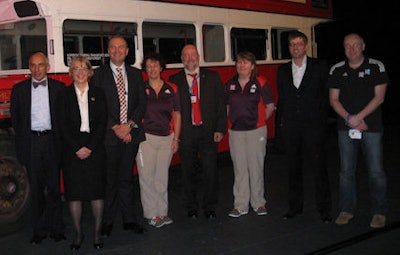 Practice made perfect: Members of the London 2012 emergency medical service team.
Practice made perfect: Members of the London 2012 emergency medical service team.Transfer of experience postgames
Asked whether he would change anything with the benefit of hindsight, Zideman said only small things such as staffing -- for example, availability of venue medical managers. "Other than that, I probably wouldn't change anything. In fact, I am putting the same arrangements in place for the World Rowing Cup event this year."
He also works closely with medical services for rugby and football. In rugby, they are now utilizing a new system of daily training for medical staff on the back of the experiences at the Olympics. "The field-of-play training meant the team learned the importance of working together. In rugby, they now run prematch training sessions and this works well."
He added that rather than turn up 10 minutes before the game starts, medical staff now turn up an hour before, putting together their equipment, working as a team, and ensuring all staff know where everyone is going and what they are doing. "Ideally, you have the Formula One scenario where everyone dives into place, does what they have to, knowing exactly what they are doing when needed," he said.
Experiences at the Olympics have also been transferred to everyday emergency services. Zideman worked very closely with the ambulance service during the games and continues to do so now. In fact, he has recently taken on a new role as director of clinical operations of the East Anglian Air Ambulance Service in the U.K. "All of our experience from London 2012 has gone into the ambulance service [generally], so we are looking at equipment, we are changing from spinal boards, for example, to 'scoops,' and 'basket stretchers' are now very important too."
"It wasn't quite 'Team Ferrari' but we had to get people off the field of play in one and a half minutes, so it still had to be slick. Just for reference, wheel changes for Team Ferrari take 7.1 seconds!" he concluded.



